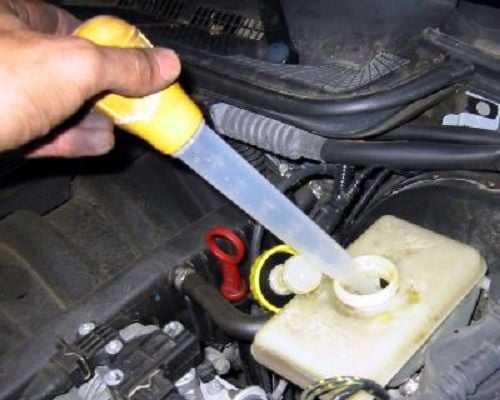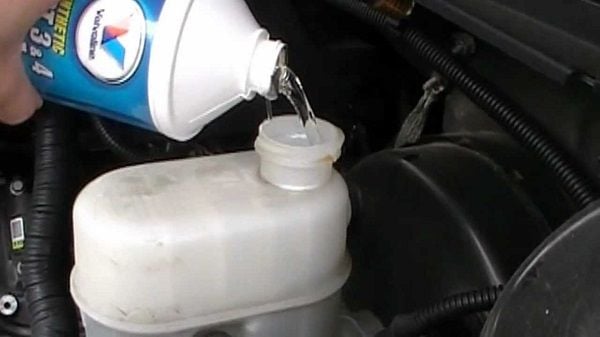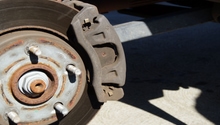Jeep Wrangler JK: How to Bleed Your Brakes
Just like all the other fluids on your vehicle, brake fluid has a service life and must be changed out at certain intervals. Here's how to perform the job on your Jeep Wrangler.
This article applies to the Jeep Wrangler JK (2007-Present).
Mostly everyone who drives a vehicle is aware of the fact that they must change their oil at specific intervals. But I can tell you that not many people even think about changing their brake fluid out. I believe this to be for a couple reasons. Either they are not aware that it needs to be changed out, or they feel that because it's part of a sealed hydraulic system that there is no need to change it out. Yes, I have heard this argument before.
The fact is, brake fluid is hygroscopic. This means that it absorbs water and moisture from the surrounding environment. As the brake fluid is in service for a certain amount of time, it absorbs moisture, and the more moisture it absorbs, the less effective it becomes at performing its job as a hydraulic fluid. This is why over time your brake pedal can begin to feel squishy. Now the first thing people go to is changing out brake pads and possibly even rotors. Of course, this improves the feel of the brake pedal a little bit but the squishy feeling is still there. This means that it is time to change your brake fluid out.
Changing your brake fluid is actually a simple process, which requires very basic tools. The most difficult part will be finding someone willing to help you when it comes time to bleed the brake system if you don't have a brake bleeder.

Materials Needed
- Millimeter wrenches sizes 10mm-13mm
- Willing assistant
- Turkey baster or other suction device for removing fluid
- Container with flexible hose that can be attached to bleeder nipple
These Jeep Wranglers require DOT 3 brake fluid. It is very important that you get the correct brake fluid. Also, always buy an extra container. It's hard to tell exactly how much you are going to need and most service manuals do not specify the quantity of brake fluid in the vehicle's brake system.
When it comes to the bleeding of the brake system, there are pretty much two ways to go about this. The most common way is to use another person and have them pump the brake pedal while you loosen the bleeder nipple. The other way to do this does not require another person, but you will need to purchase a vacuum operated bleeding tool. This allows you to apply vacuum pressure at the bleeder nipple or at the brake fluid reservoir, which will draw or push the fluid out of the brake system. If you perform this procedure often, it would be a good idea to invest in the brake bleeder tool; if not, the assistant method works just fine. Both will get the job done.
Last but not least, some people find that they can bleed the brakes without taking the wheels and tires off. Take a look for yourself. It's not necessary to remove the wheels and tires, but it does help. I will leave that decision up to your better judgement.
Step 1 – Remove old brake fluid
The first thing you will want to do is locate the brake fluid reservoir. It is item number three in Figure 1. Next remove the cap, and using your turkey baster or other suction device, remove all of the old brake fluid from the reservoir. Just get as much as you can out of the reservoir, being careful to not spill any brake fluid on your paint.

Figure 1. Jeep Wrangler engine compartment. 
Figure 2. Turkey baster brake fluid removal.
Step 2 – Fill reservoir with new brake fluid
Next, take the new DOT 3 brake fluid you have purchased and fill the reservoir with it. It is okay to fill above the max line because you will be drawing the new fluid through the brake system, so you will want some excess in the reservoir.

Step 3 – Bleed brake system
In order to draw the new fluid into the brake system and extract the old fluid, you will need to bleed the brake system. When performing the brake bleeding procedure, make sure to not let the level of the brake fluid in the brake fluid reservoir fall below the minimum line. Failure to do this will allow air to enter the brake system and require you to start the bleeding procedure over again.
Bleed brakes as follows:
- Remove residual vacuum (or hydraulic pressure) by applying the brake several times with the engine off.
- Remove the cap and top off reservoir if necessary.
- Place the tube of the catch can over the bleeder valve on wheel that you are going to be bleeding. Start with farthest corner from master cylinder first and work your way to the closest.
- Have an assistant slowly depress and hold the brake pedal in the depressed position.
- Open the bleeder screw enough to allow a flow of fluid to leave the valve. While doing this, keep an eye on the fluid being removed. It will be a dark color.
- Tighten the bleeder screw.
- Have assistant release the pedal.
- Repeat steps 4 to 7 until you see fresh, lighter colored fluid coming out of the bleeder screw tube.

Related Discussions
- JK Brake Fluid - JK-Forum.com
- Changing Brake Fluid - JK-Forum.com






